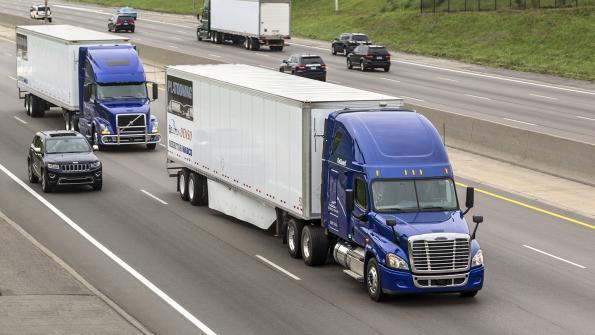
Ready or not, truck platooning is inching closer to reality. And it offers a real chance at fuel savings.
Autonomous vehicles get all the headlines. But despite the buzz, they are at least several years away at the earliest, and perhaps even 20 or more years away from becoming commonplace on American roadways. Platoons, though, are a completely different story.
What is platooning and why are we getting so close to real-world application? Platooning reduces aerodynamic drag by closely grouping tractor-trailers together via electronic coupling. The vehicles travel at a relatively close distance to minimize drag. The first vehicle serves as the leader with each successive truck in the platoon connected and controlled autonomously by the lead truck. A driver in a trailing vehicle could pull his vehicle out of the platoon at any time and all remaining vehicles would automatically close the gap between vehicles.
Platoons have a chance to significantly cut into U.S. diesel fuel use. According to research conducted by researchers with the National Renewable Energy Laboratory (NREL), U.S. trucking contributed 7.5% of total U.S. GHG emissions in 2013 and consumed 64.9% of all energy in the freight sector.







